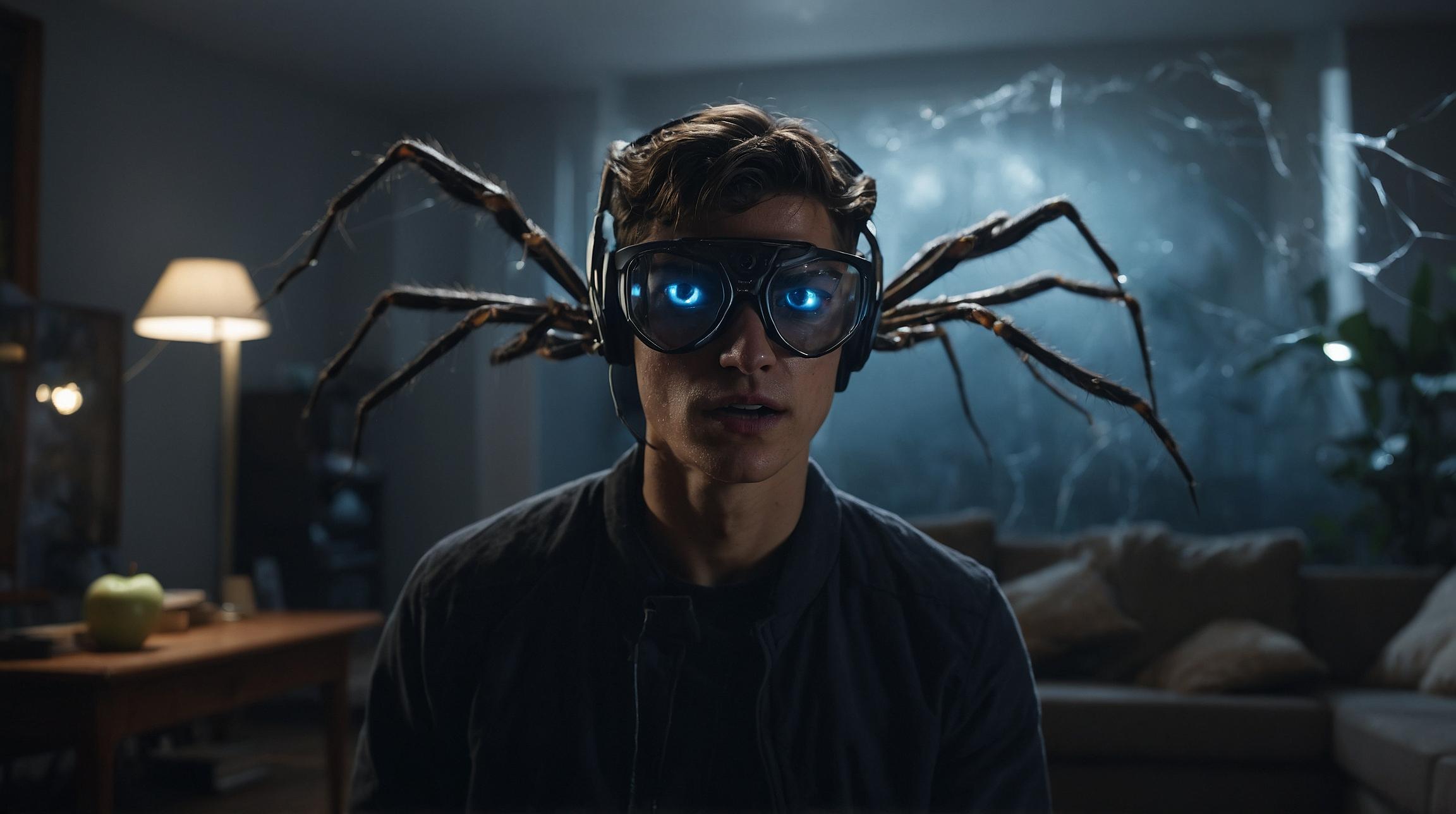Apple Vision Pro Flaw Let Attackers Fill Your Room with Hundreds of Spiders
Users had to click the link for Safari to prompt the Quick Look application to render the file.
Cybersecurity experts have discovered a critical flaw in Apple’s latest augmented reality (AR) headset, the Apple Vision Pro. This vulnerability allows malicious actors to exploit the device and project hundreds of virtual spiders into the user’s environment, causing panic and potential harm. The flaw has raised significant concerns about the security of AR technology and the potential psychological impact on users.
Initial Discovery
The vulnerability was uncovered by a team of researchers at CyberSafe Labs, a leading cybersecurity firm. Surprisingly, the visionOS team seems to have overlooked an older web-based 3D model viewing standard: Apple AR Kit Quick Look. When Apple first ventured into AR/VR/XR in 2018, they introduced an HTML-based method in iOS for rendering 3D Pixar files called In-Place USDZ Viewing. By adding the “ar” value to an anchor tag’s “rel” attribute and placing an <img> tag inside the <a> element, any website could instruct mobile Safari to treat the link as an in-place 3D model. Users had to click the link for Safari to prompt the Quick Look application to render the file.
After some quick testing, I discovered that this standard, including the visionOS build, is still functional in WebKit and even supports the more modern “.reality” filetype created by Apple’s Reality Composer. We can even add Spatial Audio, making it seem like the sound emanates from the object. Even better, these features work out of the box, so the victim does not need to enable any experimental features. Here’s the intriguing part: Safari does not enforce any permission model on this feature. Moreover, it does not even require the anchor tag to be “clicked” by a human. Programmatic JavaScript clicking (i.e., document.querySelector('a').click()) works seamlessly! This means we can launch an arbitrary number of 3D, animated, sound-producing objects without user interaction. If the victim merely views our website in Vision Pro, we can instantly fill their room with hundreds of crawling spiders and screeching bats! It’s truly freaky stuff.
Screen recording of spiders literally crawling out of my malicious website.
A huge NOPE right away.
My office was full of hundreds of screeching bats after viewing my website for a couple seconds.
Technical Details
The flaw resides in the Vision Pro’s software, specifically in handling external inputs and commands. Attackers can gain unauthorized access and manipulate the AR environment by sending a carefully crafted sequence of data packets to the device. The researchers demonstrated the exploit by projecting hundreds of spiders into a controlled test environment, showcasing the potential for chaos.
According to CyberSafe Labs, the vulnerability stems from insufficient input validation and a lack of robust security protocols in the Vision Pro’s software architecture. The researchers have reported their findings to Apple and are working closely with the company to develop a patch.
Apple’s Response
Apple has acknowledged the flaw and issued a statement emphasizing its commitment to user safety and security. “We take security very seriously and are working diligently to address this issue. We appreciate the efforts of CyberSafe Labs in identifying this vulnerability and are collaborating with them to release a software update as soon as possible,” said an Apple spokesperson. The company has advised Vision Pro users to remain vigilant and avoid connecting their devices to untrusted networks until the patch is released. Apple has also assured users that they are conducting a thorough review of their AR security protocols to prevent similar issues in the future.
The vulnerability news has sparked a wave of reactions from Vision Pro users and the broader tech community. Many users have expressed their concerns on social media, with some sharing their experiences of encountering virtual spiders. “I was using my Vision Pro when suddenly, my room was filled with these terrifying spiders. It felt so real that I couldn’t help but scream,” tweeted one user. “I hope Apple fixes this soon because it’s genuinely scary.” Cybersecurity experts have also weighed in on the issue, highlighting the need for more stringent security measures in AR technology. “As AR devices become more integrated into our daily lives, ensuring their security is paramount. This incident underscores the importance of rigorous testing and robust security protocols,” said Dr. Michael Thompson, a cybersecurity analyst.
The Broader Implications
The discovery of this flaw raises broader questions about the security of AR and virtual reality (VR) technologies. As these devices become more advanced and widely adopted, the potential for malicious exploitation increases. Experts warn that similar vulnerabilities could be used to create even more disturbing and harmful scenarios. “Imagine if, instead of spiders, attackers projected violent or disturbing images. The psychological impact could be devastating,” noted Dr. Carter. “It’s crucial that companies prioritize security in the development of AR and VR technologies to protect users from such threats.”
The Apple Vision Pro flaw is a stark reminder of the vulnerabilities inherent in emerging technologies. While Apple is taking swift action to address the issue, the incident highlights the need for ongoing vigilance and robust security measures in the AR and VR industry. As users await the forthcoming patch, the tech community continues grappling with the unsettling discovery’s implications.













